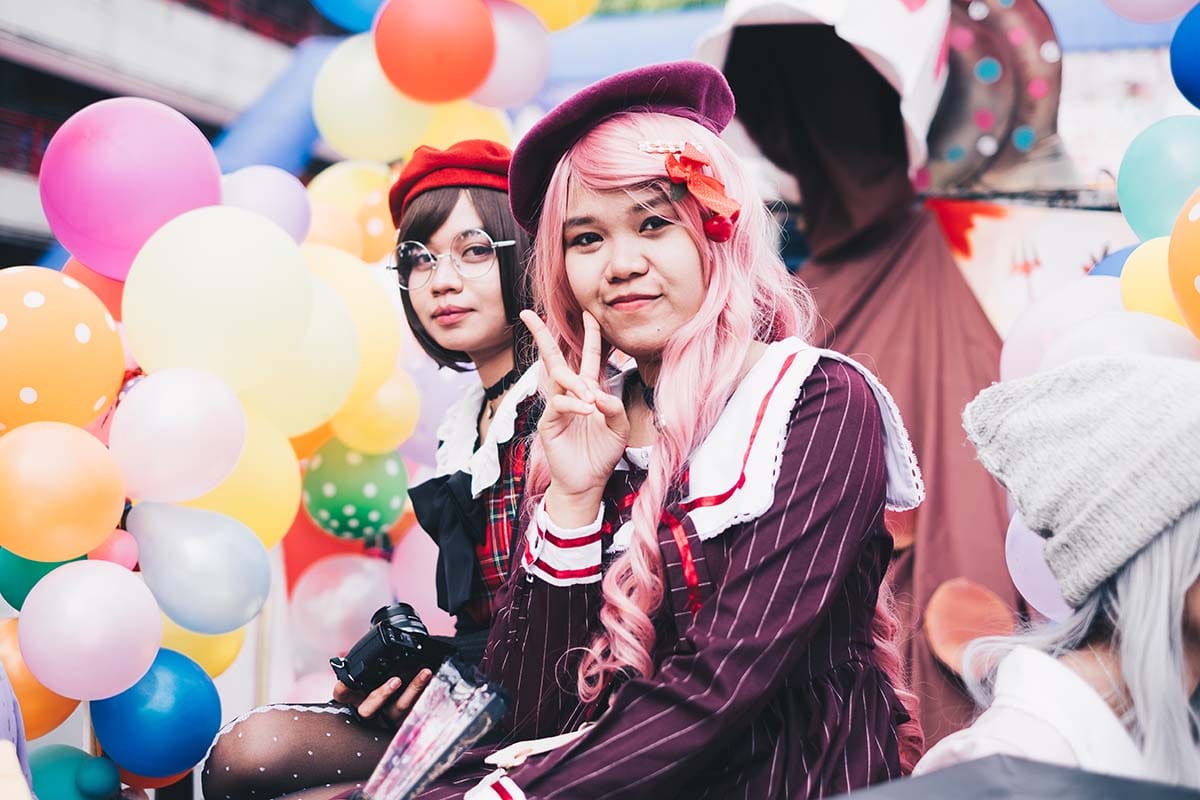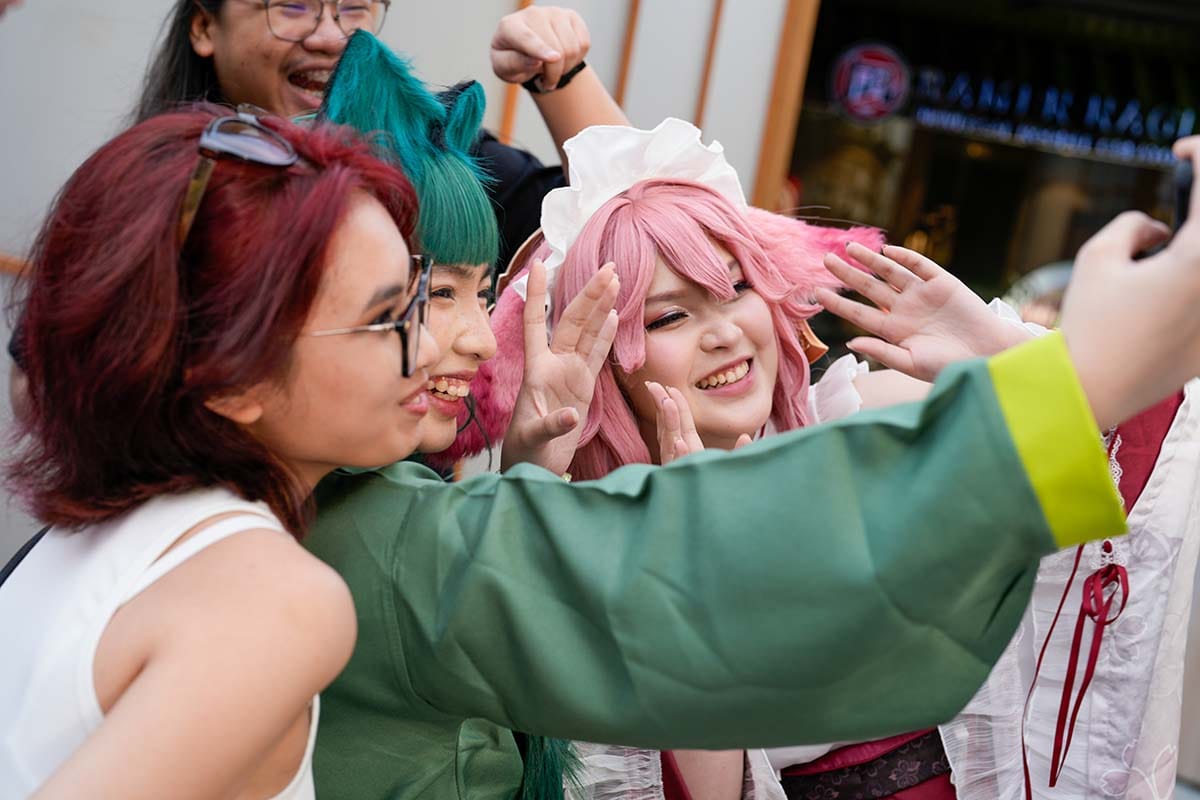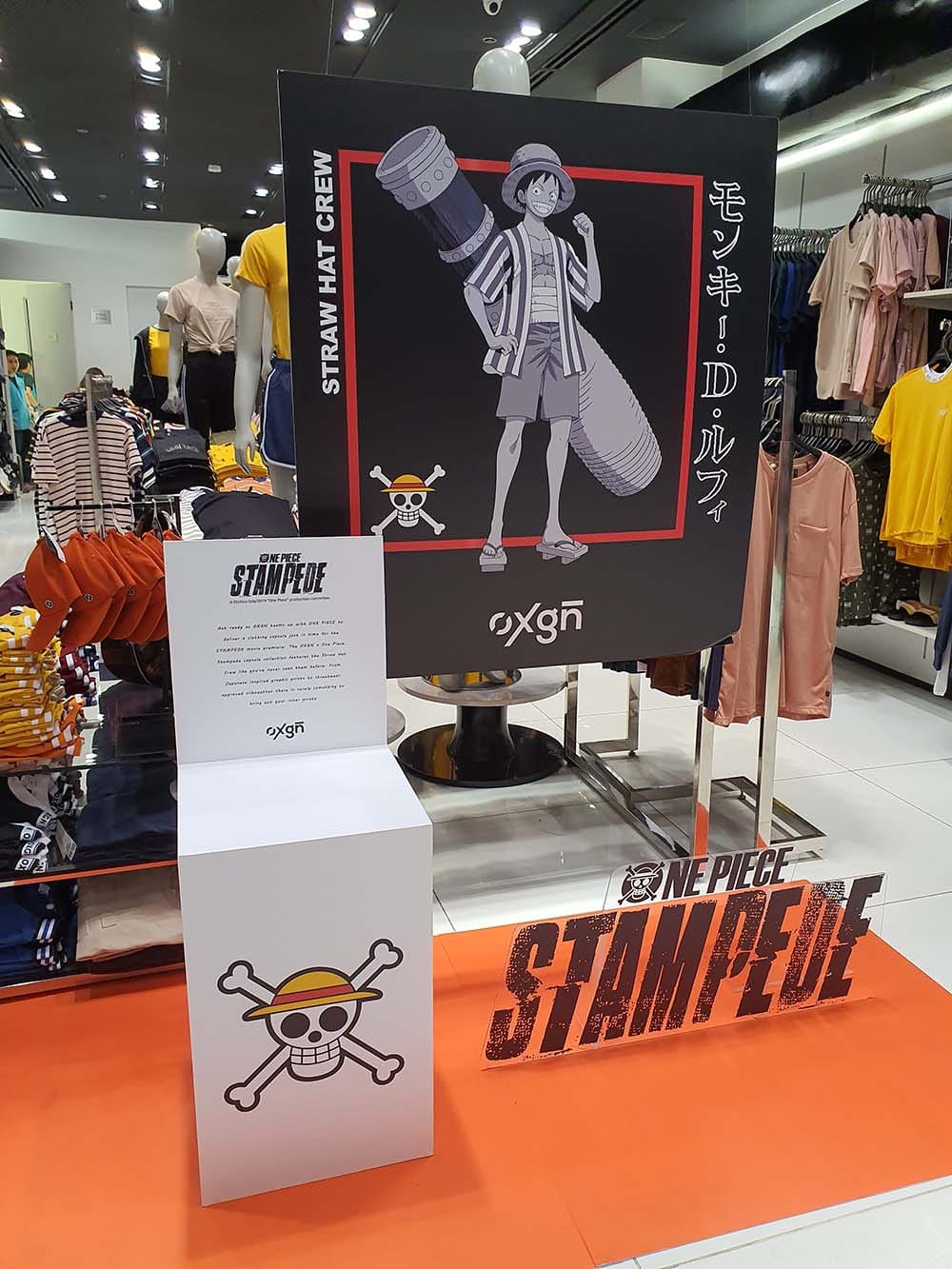While the Philippines has long been a melting pot of cultures, in recent decades, the influence of Japanese pop culture has become remarkably prominent. From television shows, comics, and music to fashion, cosplay, and cuisine, Japanese pop culture has caught the eye of scores of Filipinos — particularly in the cult-worthy genres of anime and manga, both of which have massive followings in the Southeast Asian country. For its upbeat and unique expressions, many of which can be traced to Japan’s centuries-old traditions, Japanese pop culture has become a significant driver of cross-culture in the Philippines.
The themes explored in anime and manga — friendship, perseverance, individuality, identity, and acceptance, among others — hit home with Filipino youth. These stories typically reflect the struggles and aspirations of young people, providing a sense of comfort and relatability. The narratives encourage creativity and self-expression, allowing fans to explore their identities through a sense of community, art, writing, and performance.
The anime ascendancy and manga mania
In the 1990s, local television stations began airing popular anime series, such as Dragon Ball Z, Sailor Moon, and Voltes V (which was re-aired after its massive popularity in the late 70s). These shows not only entertained but also allowed Filipino audiences to take a dive into Japanese culture, storytelling, and art styles. The vivid animation and relatable characters generated a rising tide of interest, leading to a growing fandom that thrived in both urban and rural settings. Alongside anime, manga also found its way into the hearts of many Filipinos. Titles like “One Piece,” “Naruto,” and “Attack on Titan” are often seen in local bookstores and markets. The availability of translated versions has made it easier for fans to access these stories, further fueling their popularity. In fact, the Philippines ranks among the top countries for manga sales in Southeast Asia, showcasing the high demand for these graphic novels.
By way of a fun fact, in 2021, the Philippines became the top country for “Attack on Titan” fan searches globally, illustrating the nation’s passion for anime. This popularity has led to an increase in local adaptations and fan art, further solidifying the genre’s impact. Japanese anime series continue to take a chunk of local TV network programming, airing in both dubbed and subbed formats. Plus, with the rise of streaming services these days, access to a wider array of content has never been easier, entertaining viewers of all ages, and also educating audiences about different narratives and Japanese cultural nuances.
Empowering a fierce, fan-driven base
As the popularity of anime and manga soared, so did the community of Japanese pop culture aficionados. This burgeoning interest not only brought together fans from all corners of the Philippines, and even from across Asia, but also wove a striking tapestry of shared experiences and creativity. As the fandoms grew, the number of conventions dedicated to these art forms likewise surged in popularity. Events like Cosplay Mania, ToyCon, Sugoi Anime Festival, Anime Cosplay Expo (ACX), Otakufest, and Anime Festival Asia (among numerous others) have become cultural touchstones, drawing thousands of attendees each year and bearing witness to the power of conventions to ignite and fuel fandoms. These conventions usually feature an impressive lineup of guests, including voice actors, artists, and industry professionals, allowing fans to interact directly with the creators of their favorite works.
Moreover, conventions serve as hubs for fans to come together and bond over their mutual love for anime, as well as participate in various activities, including panels, workshops, and contests. Attendees can engage in informative discussions about the latest trends in anime and manga, learn new skills in hands-on workshops, and showcase their creativity in cosplay competitions. The atmosphere is typically supercharged and animated to the highest degree, filled with the energy of like-minded individuals celebrating their common passions.
Undoubtedly, these conventions nurture a sense of community, providing a safe space for fans to express themselves and connect with others with the same interests. This sense of belonging plays a significant role in the growth and sustainability of the fandoms, creating lasting friendships and memories that extend far beyond the convention floor.
Channeling your inner cosplay chameleon
One of the most vibrant aspects of Filipino fandom is cosplay (costume play) culture, a type of performance art that allows fans to embody their favorite characters through costumes and live exhibitions. This is where fans can tap into their inner chameleon, switching from one character to the next through elaborate costumes and character nuances. Filipino cosplayers, many of whom have become masters of transformation, have gained recognition both locally and internationally, for their creativity, charisma, and keen attention to detail. For instance, Alodia Gosiengfiao and Ashley Gosiengfiao have become prominent figures in the cosplay community. Alodia’s impressive array of costumes and her presence at conventions have made her a household name, inspiring many young fans to take up cosplay as a hobby. She often portrays characters from franchises like Final Fantasy and Sailor Moon, showcasing her craftsmanship and creativity. Ashley, while also a talented cosplayer, complements Alodia’s work with her own unique style, featuring characters from popular anime and games, further enriching the Filipino cosplay scene.
Another notable duo is Prince and Awie de Guzman, both of whom have captured the hearts of many with their charming husband-and-wife tandem and super approachable demeanor. Their engaging social media presence and collaborative projects highlight their bond, making their cosplays even more enjoyable for fans. While their cosplay character bank is vast — including a range of notable figures from Warner Bros. franchises — they frequently take on iconic pairings from anime and video games, bringing a sense of fun and authenticity to their characters with each transformation. Myrtle Sarrosa is well-known for her journey from reality TV to becoming a cosplay icon. Gaining fame as a finalist in Pinoy Big Brother, she has since embraced her passion for cosplay, portraying characters from series like Naruto and Sailor Moon. Myrtle’s followers deeply appreciate her attention to detail and her ability to embody the spirit of her characters, with ease.
Charess is a prominent Filipino cosplayer known for her passion for anime and gaming. She has garnered a loyal following on social media, where she shares her stunning costume designs and transformation videos. Charess frequently participates in conventions, captivating audiences with her performances and engaging personality. Beyond her cosplay, she actively promotes positivity and inclusivity within the community, inspiring many aspiring cosplayers to express themselves boldly.
Each of these cosplayers — just a few on a much lengthier list — contributes to the thriving cosplay culture in the Philippines, celebrating their favorite characters and inspiring a new generation of fans to explore the art of cosplay. A bit of trivia, the Philippines is also known for its unique twist on cosplay, often incorporating local culture and humor into costumes. Many Filipino cosplayers uniquely blend local culture and humor into their costumes by including elements like traditional attire, such as the Barong Tagalog, into popular anime designs. They draw inspiration from iconic Filipino themes, like jeepneys and street food, reimagining beloved characters in playful ways. This fusion not only showcases national pride but also adds a humorous touch, celebrating both Filipino and Japanese pop cultures.
Cultural exchange between the Philippines and Japan is, indeed, evident in various forms; from more traditional avenues of bilateral relations to the trendier streets of popular culture, cross-cultural confluence continues to make its dynamic journey between the two countries.
Merchandising and making a memorable mark
As can be expected, given the boom, the demand for anime-related merchandise has skyrocketed in recent years. Another highlight of conventions and similar events is the array of stalls and booths (very likely fan-owned) brimming with merchandise, allowing event-goers to acquire exclusive items and support local artists.
From collectible toys and action figures to clothing and accessories, Filipino fans are eager to display their favorite characters and series on the pedestal of their personhood. Local shops and online marketplaces have adapted to this trend, offering a diverse range of products. Additionally, fan-made merchandise — such as art prints, stickers, shirts, and other trinkets —has flourished, highlighting the creativity of Filipino artists.
Furthermore, the influence of Japanese pop culture has led to exciting collaborations between Filipino and Japanese artists. For example, some Filipino musicians draw inspiration from anime soundtracks, incorporating elements into their own songs. Moreover, local adaptations of popular anime, such as Voltes V: Legacy, demonstrate the blending of cultures and the undeniable ability of anime to connect with Filipino audiences.
Anime and manga have also had a profound impact on language learning in the Philippines. Many young people are inspired to learn Japanese to better understand their favorite series and to better relate with their beloved fictional characters. Language classes and online resources have become increasingly popular, fostering a deeper connection to Japanese culture.
Building dynamic cultural bridges through decades
Cultural exchange between the Philippines and Japan is, indeed, evident in various forms; from more traditional avenues of bilateral relations to the trendier streets of popular culture, cross-cultural confluence continues to make its dynamic journey between the two countries. In the Philippines, the love for Japanese pop culture remains fresh and fiery, shaping communities, inspiring creativity, and building robust connections across nations and generations.







